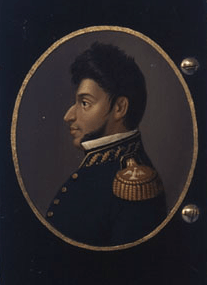Afro-Mexicans in the Mexican War of Independence
The history of Africans in Mexico has not been well documented or recognized by the government and society. The Spanish relied upon slavery to expand their empire and to increase their wealth, and during the 16th and 17th centuries, African slaves were brought to Mexico to toil in sugar fields and work in underground mines. Estimates vary, but somewhere between 200,000 and 500,000 slaves were brought to Mexico during the colonial expansion.[1] Over the years this bloodline has been absorbed into the population and the contribution of Afro-Mexicans has largely been forgotten. During the Mexican War of Independence 1810- 1821, it is estimated that about 30 to 40 percent of mixed race Mexicans had African in their mix.[2] The decree abolishing slavery by priest Miguel Hidalgo, Mexico’s Founding Father, was a significant enticement to attract Afro-Mexicans to the fighting ranks, and there were many unsung heroes.
Most of the Mexican citizens with African ascendance are located in the southern part of the territory, their location is mostly based on that the importance of the ports and harbors that connected the Pacific Ocean and the Gulf of Mexico which goes to the Atlantic. The majority of them still is linked to agricultural economic activities.[3]
Background
The war of independence was precipitated by events in Europe, specifically a failed coup against the viceroy Joseph Bonaparte. This encouraged small groups of rebels to take up arms against colonial rule. In September 1810, peasants and indigenous inhabitants of Dolores (Guanajuato) were called to action by the secular Catholic priest Miguel Hidalgo y Costilla, former rector of the Colegio de San Nicolás Obispo. People of color were able to see that their independence was worth putting up a fight for it. However, Hidalgo was defeated. José Maria Morelos y Pavón, an Afro-Mexican himself,[4] was dedicated to the cause and diligently recruited and trained an army consisting of free black peasants from various regions within the country.[5] However, in 1815 he was also defeated and put to death. José Maria Morelos had under his command the brothers Hermenegildo and Pablo Galeana who invited Vicente Guerrero to join the Independence movement, Guerrero became in charge of reinforcing the Pacific South Coast. Miguel Hidalgo, José Maria Morelos and Vicente Guerrero are the most important and recognized figures of the Mexican Independence movement, images of Miguel Hidalgo and Jose Maria Morelos are present in the one hundred and twenty pesos bills.
Vicente Guerrero

Upon Miguel Hidalgo's death the army declined and the future was not looking very promising. Guerrilla warfare seemed to be the main line of attack. The army was now under the command of Vicente Guerrero. This war did not seem to be looking good for those fighting for independence.
There were many heroes associated with the war for independence. Vicente Ramón Guerrero Saldaña was one of them. He was born in the year of 1782 in Tixtla near Chilpancingo, Guerrero to a poor family of farmers, having three different backgrounds (Indigenous, Spanish and African) made Vicente’s social position a challenge because of the segregation and slavery He was able to succeed in gaining leadership due to his oratory skills and ability to speak different languages. Although he had little education he possessed other skills that helped him as a military leader, such as having knowledge of the geography of the region, this helped entering to towns where the access to main roads was difficult, and although his four-year command was mostly a holding action and the military was almost always on the brink of collapse, he was considered one of the greatest Mexican war heroes. He is identified as the “consummator of the Mexican independence”.[6] In 1821, when he finally decided to take over the entire army, he was offered a settlement by the Spanish. The settlement ruled out the abolition of slavery as well as the land reform proposed by Morelos, nonetheless the caste system of Spain would cease to exist. Guerrero agreed, the caste laws were revoked and independence and peace were soon to come. Upon his death in 1831, all of his alliance moved their all allegiance to populist Juan Alvarez.
Bibliography
- Andrews, George. Afro Latin America 1800-2000. Oxford University press 2004. New York, New York
- Vincent, Theodore. The Legacy of Vicente Guerrero, Mexico’s First Black Indian President. University Press of Florida. 2001 pg 21
References
- ↑ "HISTORY OF THE AFRO-MEXICANS". Retrieved 10 January 2017.
- ↑ "The Secret Relations Between Blacks and Mexicans". Retrieved 10 January 2017.
- ↑ http://www.conapred.org.mx/userfiles/files/TestimonioAFRO-INACCSS(1).pdf
- ↑ Vincent, Ted (Summer 1994). "The Blacks Who Freed Mexico". The Journal of Negro History. 79 (3): 258. doi:10.2307/2717506. JSTOR 2717506.
- ↑ Vincent, Ted (Summer 1994). "The Blacks Who Freed Mexico". The Journal of Negro History. 79 (3): 259–263. doi:10.2307/2717506. JSTOR 2717506.
- ↑ http://www.memoriapoliticademexico.org/Biografias/GUS83.html